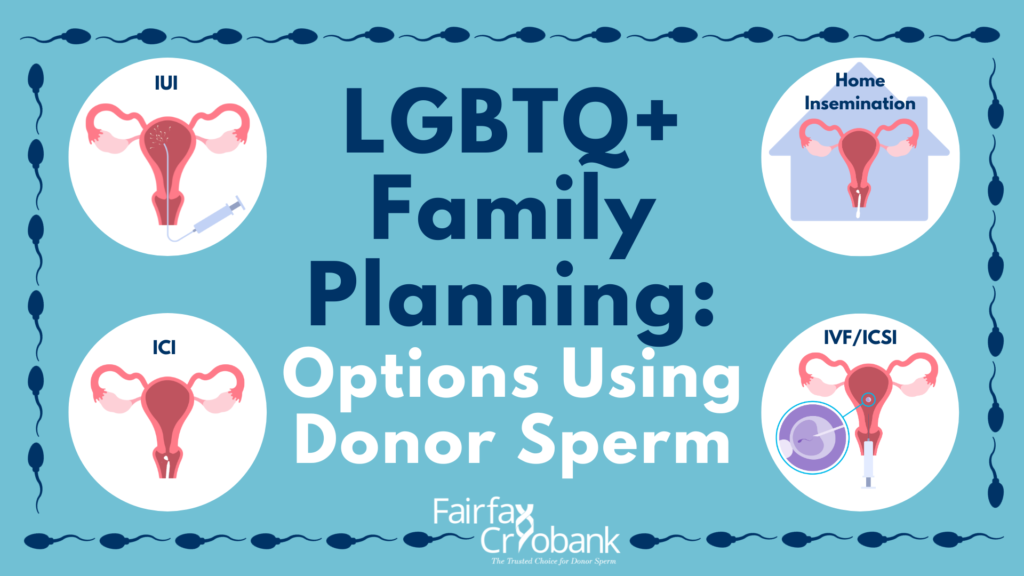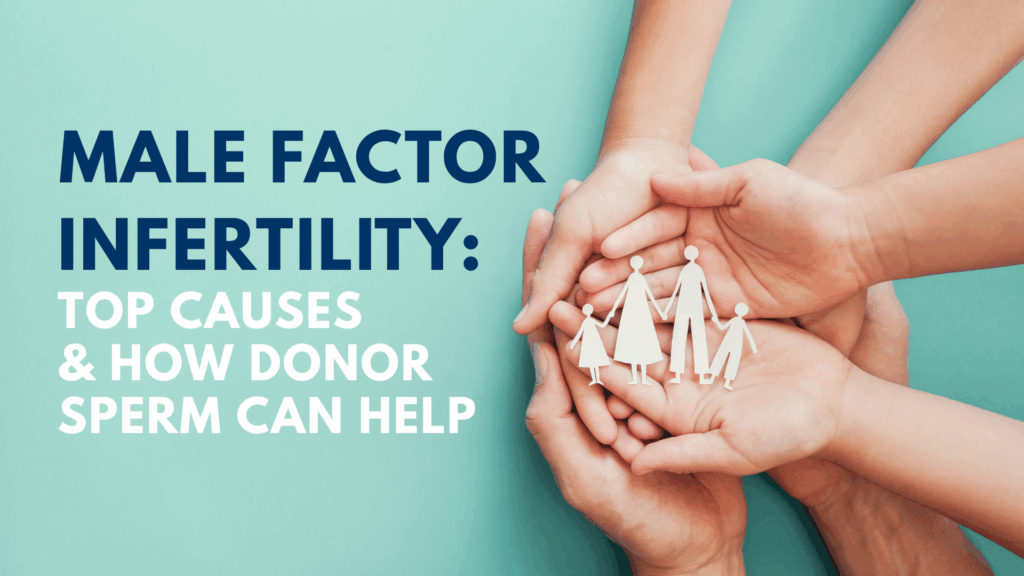LGBTQ Family Planning: Options Using Donor Sperm

Deciding to start or expand your family is a beautiful and exciting time—but it also comes with much planning. As an LGBTQ+ couple, there are many choices for you and your partner to make, and those choices can range from thrilling to overwhelming. (Decision fatigue, anyone?)
The first step is to look at and understand all options for achieving parenthood. Some might not be a fit and the decision is purely personal, but it’s worth being aware of what’s possible. Fertility and family planning journeys aren’t always straight lines from point A to point B, and at some point, you may find yourself in a position where you want to pivot or adjust your plan.
The primary categories of family-building options for LGBTQ+ couples are:
- Adoption, when a person or couple assumes the legal responsibility of parenting a child whose biological or legal parent or parents have surrendered parental rights. Legal adoptions permanently transfer all rights and responsibilities from the biological parents to the adoptive parents.
- Egg donation, where an egg is used from a donor outside your partnership.
- Surrogacy, where someone outside your partnership carries your pregnancy (which may or may not contain your own and/or your partner’s genetic material)
- Assisted Reproductive Technology (ART) procedures, including in vitro fertilization (IVF), reciprocal IVF (RIVF), and intracytoplasmic sperm injection (ICSI). Each of these procedures is done using donor sperm. Home Insemination is also an ART procedure, where the sperm is inserted into the vagina during an ICI procedure. For couples who are using donor sperm with no known fertility issues, home insemination is one way to make the process of conception more intimate, cozy, and comfortable. Read our Home Insemination Timeline blog for more information.
The first three options are relatively straightforward, so we’ll focus on the last category, ART procedures using donor sperm:
Home Insemination
This procedure can be done in the comfort of your own home by inserting a needless syringe into the vagina and depositing the sperm onto the cervix. This process does not require the seminal fluid to be washed. The preferred option is to purchase an ICI vial, but you may still purchase an IUI vial if that is what your chosen donor has available. You can also combine two ART vials for home insemination.
IUI
IUI stands for intrauterine insemination, which is a type of artificial insemination. In this procedure, a doctor injects sperm directly into your uterus during ovulation. When you go in for your appointment, your doctor will thread a catheter (a very thin tube) into your uterus and deposit the sperm directly there. You’ll stay in a reclining position for about 20 minutes after the procedure, and then you can go home. Compared with ICI or intercourse, sperm doesn’t have to travel as far.
IVF
In vitro fertilization is an ART procedure that uses hormonal medication to stimulate ovulation in the gestational partner. Then, in an in-office procedure known as egg retrieval, their eggs are harvested, tested for quality, and (if the couple chooses) genetically tested. Using the viable eggs, the fertility lab will fertilize them with your donor sperm by incubating them together overnight. The ideal result will be an embryo—or, if you’re lucky, several embryos, which can be frozen for later use or donation.
On your fertile date, your fertility doctor will perform another embryo transfer (another in-office procedure), in which the embryo is implanted into the gestational partner’s uterus using a syringe and a catheter. This procedure can be repeated for as many embryos as the couple has and is willing to use and has a high success rate, particularly for younger gestational partners.

RIVF
Reciprocal IVF, also known as RIVF or co-maternity, is an ART procedure for same-sex female couples. It includes everything we just outlined. Harvested eggs from the non-gestational partner are used instead of the gestational partner’s egg. The procedure is the same from that point forward (testing, fertilization, and embryo transfer) using donor sperm. For female same-sex couples, RIVF can be an incredible way to share the physiological experience of conception and maternity.
ICSI
Intracytoplasmic sperm injection (ICSI) is an add-on procedure that works with IVF and RIVF. It takes place during the fertilization stage of the process. Instead of simply putting the egg and the donor sperm together to incubate overnight, the fertility lab will extract a single healthy sperm from the donor sample and inject it directly into the mature egg. ICSI increases rates of fertilization and viable embryos, particularly in cases where previous IVF cycles haven’t been successful or in instances of male factor infertility from the donor (which would only happen with a known donor, as all sperm bank donors are carefully screened for sperm quality and quantity).
Planning Your Family
As you consider your family planning options, there are many considerations: expense, timeline, and the emotional cost of each choice. Only you and your partner (perhaps with a trusted advisor like your fertility doctor) can decide exactly what’s best for you and your family, but having all the information that’s out there can help you make an informed decision.
Looking for more information or LGBTQ+ family planning resources? Learn more here: https://fairfaxcryobank.com/lgbtqx-families!







